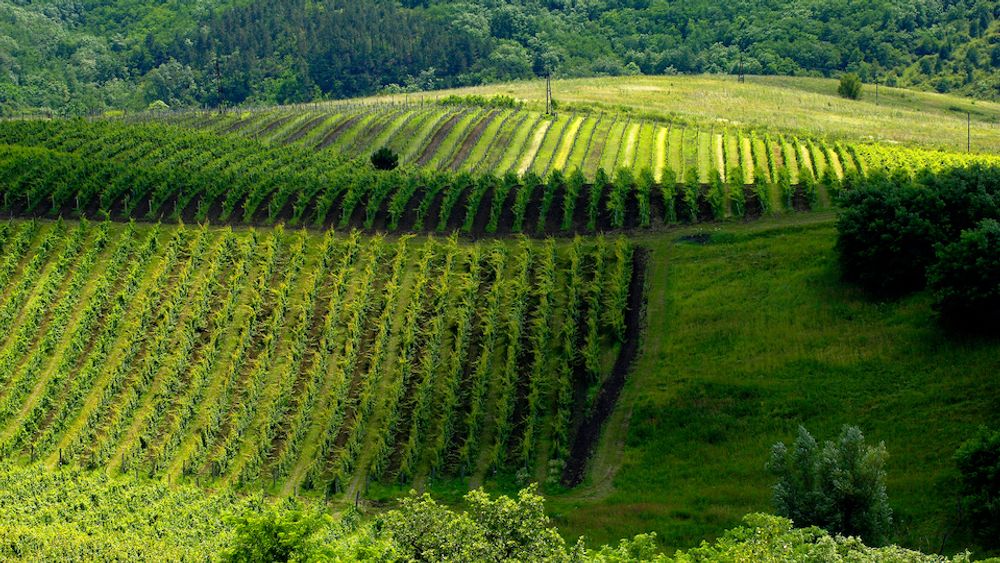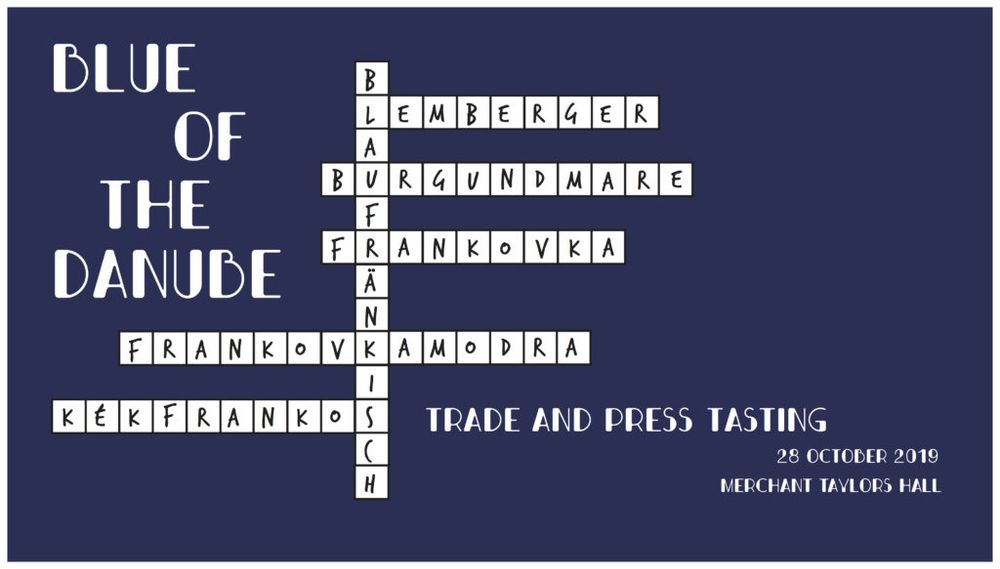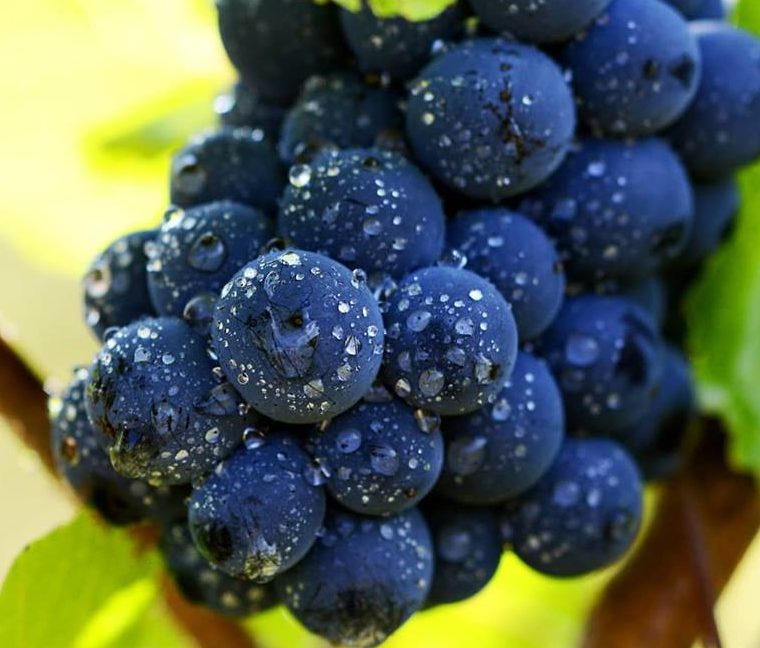The Blue of the Danube tasting will be a rare chance to try many different styles of Kékfrankos/ Blaufränkisch, to see the impact of terroir, viticulture and vinification in a walk around tasting of over 100 wines from numerous regions and six countries. To register click here

Blue is the colour, Blaufränkisch is (just one of) its names
While much of the focus on the wines of Central and Eastern Europe rests with white wines, there is a small, and rapidly growing development in the red and rosé sector. Warmer summers have considerably helped, with cooler regions increasingly able to produce riper fruit.
Kékfrankos is the most important red variety of Central and Eastern Europe, and is the principal red variety in Hungary, Austria and the Czech/Slovakian vineyards. The variety shows an almost Cabernet Sauvignon like ability to adapt well to different terroirs and to show well, both as fruity high-volume wines and as intense, full bodied single vineyard examples. Sour cherry to rich compote, with spicy, notes, fine tannins and fresh acidity are typical characteristics.
Culturally the homeland for this variety seems to follow the Danube as it flows across the region. Starting in southern Germany, the variety, known here as Lemberger, with less than 2,000 hectares. In this cooler climate, the wines are lighter, with softer tannins.
The Danube flows across Austria where the variety is known as Blaufränkisch and is the second most important red grape variety after Zweigelt (itself an offspring of Blaufränkisch and St Laurent), with 3,340 hectares, representing 6% of all Austrian plantings (2008). Due to successful marketing, it is probably as Austrian Blaufränkisch the variety is most well-known. It is mainly found in the Burgenland and the neighbouring region of Neusiedlersee, in eastern Austria, where the warm, dry climate produces full bodied, almost opulent styles, with fine supple tannins. An increasing number of producers are working with single vineyard sites and are exploring the different styles from a variety of terroirs.
Immediately across the border in Hungary, south of the Neusiedlersee (lake Fertö) lies the region of Sopron, regarded by many as the heartland of Kékfrankos production. With 890 hectares, the style is similar to those of Austria.
Before the Danube swings south to cross Hungary, it runs along the southern border of Slovakia. Known here as Frankovka Modrá. It is one of the most widely planted varieties in Slovakia and Moravia in the Czech Republic, along with André, a cross of Frankovka and St Laurent. The cooler climate of this region produces fresh vibrant examples.

It is the main variety in southerly Szekszárd (630 hectares) and Tolna (333 hectares) and is a major contributor to Szeksárd’s Bikavér blend (minimum 45%) and on its own. The loess soils give a smooth supple texture and tannins and, like Eger, is producing some intense, single vineyard examples. Despite its more southerly location, Kékfrankos here is possibly less powerful, with fine elegant structure and possibly more floral elegance. The most southerly region, Villány, has the smallest amount with 250 hectares, with amongst the most full-bodied of the Hungarian Kékfrankos.
The Danube sweeps past the following countries before flowing into the Black Sea. Smaller quantities are found in southern and eastern Romania, where it is known as Burgund Mare, Bulgaria where it is called Game and Croatia where it is called Frankovka. Another Croatian red variety, Borgonia, has recently been discovered to be Frankovka, so production will rise. In Slovenia it is known as Modra Frankinia.
Blaufrankisch/Kékfrankos is a variety which shows great quality and enormous diversity, and the chance to try so many styles, to see the impact of terroir, viticulture and vinification, in a walk around tasting of over 100 wines from numerous regions and six countries is a rare event, and one which should reveal some exciting wines.

Blue of the Danube will be taking place at Merchant Taylor’s Hall, London, on the 28th of October 2019. Open to the trade from 11am until 4pm, and open to consumers from 5pm to 8pm.
If you would like to find out more about Blue of the Danube to register and attend the event click here.









































